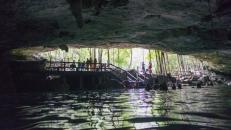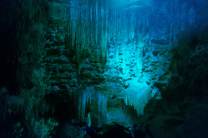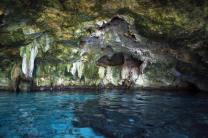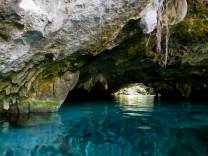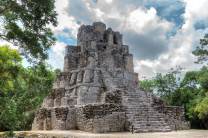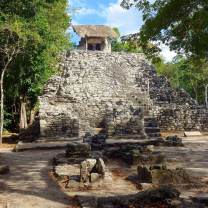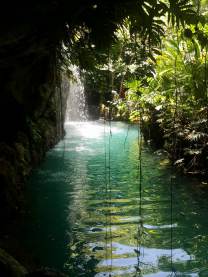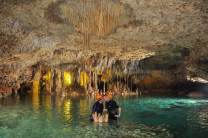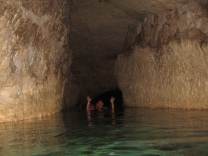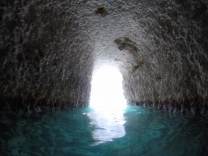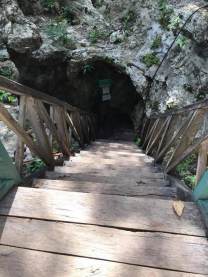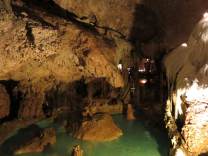
Sistema Dos Ojos
Dos Ojos (from Spanish meaning "Two Eyes"; officially Sistema Dos Ojos) is a flooded cave system located north of Tulum, on the Caribbean coast of the Yucatán Peninsula, in the state of Quintana Roo, Mexico. The exploration of Dos Ojos began in 1987 and still continues. The surveyed extent of the cave system is 82 kilometers (51 mi) and there are 28 known sinkhole entrances, which are locally called cenotes.
Dos Ojos lies broadly parallel to and north of the Sac Actun cave system. Dos Ojos has remained in the top ten, if not the top three, longest underwater cave systems in the world since the late 1980s. Dos Ojos contains the deepest known cave passage in Quintana Roo with 119.1 meters (391 ft) of depth located at "The Pit" discovered in 1996 by cave explorers who came all the way from the main entrance some 1,500 meters (4,900 ft) away. The deep passages include the "Wakulla Room", the "Beyond Main Base (BMB) passage", "Jill's room" and "The Next Generation passage". In August 2012 Dos Ojos was connected through a dry passage to Sistema Sac Actun. With March 2014 the total length of the combined system measures 319.05 kilometers (198.25 mi).
Dos Ojos is an anchialine cave system with connections to naturally intruding marine water and tidal influence in the cenotes. The coastal discharge point(s) of this cave system have not yet been humanly explored through to the ocean, although large volumes of groundwater were demonstrated by dye tracing to flow towards Caleta Xel-Ha, a nearby coastal bedrock lagoon.
The name Dos Ojos refers to two neighbouring cenotes that connect into a very large cavern zone shared...


